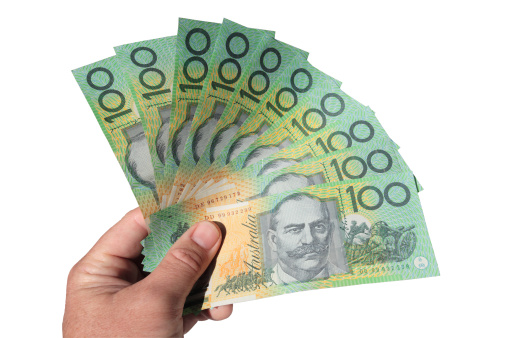Australian dollar fell as the US dollar recovered on Friday.
The Australian Dollar (AUD) is Reversing its recent gains on Friday, after Rallying on Thursday. The gain was aided by a drop in the US Dollar (USD). As dismal US Initial Jobless Claims suggested a more dovish outlook for the Federal Reserve.
The Australian dollar is under pressure as the Reserve Bank of Australia takes a less aggressive monetary policy stance.
This helped offset pressure on the Australian Dollar caused by the Reserve Bank of Australia’s (RBA) less hawkish posture. Especially in light of The Inflation data came in higher than predicted.
The Australian Inflation rate fell to 3.6% in the first quarter. Down from 4.1% the previous quarter, for the fifth consecutive quarter of slowdown. However, it outperformed predictions by 3.4%. Additionally, the Monthly Consumer Price Index (YoY) for March increased to 3.5%, exceeding the predicted figure of 3.4%. The Reserve Bank of Australia (RBA) admitted. That recent progress in inflation control has slowed. While maintaining its policy of keeping options open.
The US dollar rallied as the aggressive Fed pledged to keep interest rates higher for longer.
The US Dollar Index (DXY), which measures the performance of the US Dollar (USD) versus six major currencies, is attempting to rebound as a result of the Federal Reserve’s (Fed) decision to keep interest rates higher for longer. However, the decrease in US Treasury yields may contribute to pressure on the The greenback is strengthening the Australian Dollar pair.
In the United States (US), the preliminary Michigan Consumer Sentiment Index for May is scheduled to be issued on Friday, with a modest decrease expected. This index is a study of consumer sentiment in the United States, focusing on three areas: personal finances, business conditions, and buying conditions. Furthermore, Chinese Consumer Price Index (CPI) data is expected on Saturday, which may have an impact on the Australian Dollar (AUD) given Australia and China’s close trading relationship.
Daily Market Movers: The Australian dollar falls due to a less hawkish RBA.
The Australian Dollar (AUD) is Reversing its recent gains on Friday, after Rallying on Thursday.
The Commonwealth Bank of Australia (CBA) has reduced its projection for the Australian dollar at the end of 2024 to 0.69, down from 0.71 before. CBA highlights factors such The interest rate discrepancy and rising US Treasury bond yields are boosting the US Dollar. According to forexlive.com, the US Dollar is further supported by the Federal Reserve’s cautious stance on high inflation and reluctance to decrease interest rates.
The ASX 200 Index rose on Friday, recovering from previous losses and inspired by Wall Street’s strong performance. This came after an increase in US weekly unemployment claims, which fueled predictions for Federal Reserve interest rate decreases.
The US Bureau of Labor Statistics (BLS) announced that the number of people filing for unemployment benefits exceeded expectations. Initial jobless claims for the week ending May 3 jumped to 231,000, above predictions of 210,000 and representing a rise over the previous week’s total. of 209,000.
RBA Governor Michele Bullock emphasized the significance of remaining vigilant against inflation concerns.
RBA Governor Michele Bullock emphasized the significance of remaining vigilant against inflation concerns. Bullock believes current interest rates are well-positioned to return inflation to its target range of 2-3% by the second half of 2025, and to the midpoint by 2026.
Furthermore Societe Generale has produced a paper on the Reserve Bank of Australia. Underlining that the RBA’s optimism about economic growth is incorrect. The institution expects Australia’s economic growth to slow, with some negative surprises. They attribute their forecast to the widespread repercussions of RBA rate hikes on the economy.
Moreover According to Reuters, Federal Reserve Bank of Boston President Susan Collins stated on Wednesday. That there is a need for The US economy will undergo a period of slowdown in order to meet the central bank’s 2% inflation target. Collins stated that in order to achieve this aim. Demand will have to be reduced. She expressed confidence that Fed policy is consistent with the current economic outlook. On Tuesday, Minneapolis Fed President Neel Kashkari stated. That rates are expected to remain stable for an extended period of time. Although rate hikes are unlikely. They are not completely out of the question.









